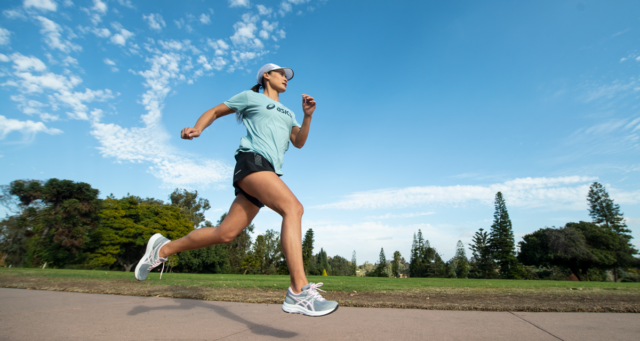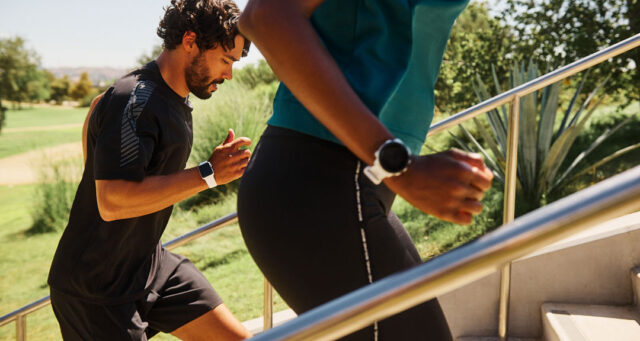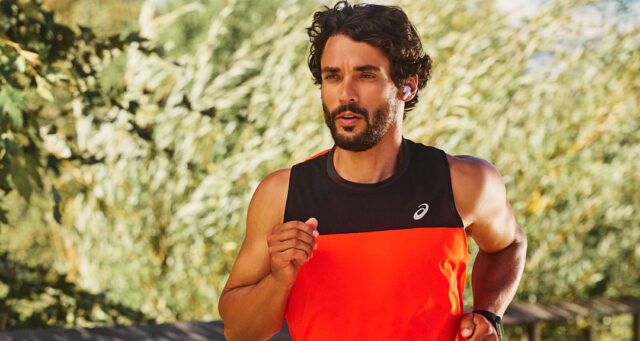Are you often running the same route? Is that route ideal for your running experience or could it be breaking down your body?
One thing most of us enjoy so much about running is the freedom. The freedom to train whenever, wherever and at whatever intensity. With this freedom, it can be challenging to choose the best solution — especially when it comes to choosing what surface to run on. Let’s look at what the science says.
Types of Running Surfaces
With running surfaces there is a spectrum, starting with the most compact. This could be concrete or asphalt. It is so compact that it will allow your body to adjust to no absorption at all. Landing on this is hard on your body. Therefore you need running shoes that can help your body absorb some of the shock that otherwise would have had cracked through your body. The advantage is that you can keep good control of your running form and you will be able to train at a high pace.
At the other end of the spectrum, you have the softest and lightest surface. Examples could be mud or powder snow. Even without having tried it, I am sure you know the disadvantage of running in those environments. You hardly move.
In between these extremes, you will find gravels, trails, grass, sand, mountainsides, forests etc.
Which Surface is Best According to Science?
The logic says that the softer the surface the less is the risk of being injured. Where does that knowledge come from? Soft vs hard, which is better? Let us dig into the sciences of choosing the right surface.
The first study I will highlight looked at 291 elite runners. 56% of the elite runners experienced tendencies towards injuries, 46% experienced injuries around the knee and 36% in the skin. There was no evidence that softer surfaces were more gentle towards the body than harder surfaces. Another study came to similar conclusions.
A study performed by the Department of Sports Science at Hong Kong University concluded that grass was the most gentle surface to the body, when you look at the risk of injuries in the feet and the ankles. Furthermore, they concluded that the treadmill was the least appropriate. Why is that the case, you might ask? The found that the flex of the knee was 6% larger at the treadmill compared to normal natural surfaces, which was the primary reason for the increased injury risk. Last, the running form and the running economy was worst on the treadmill compares to asphalt, grass and gravels.
The Reason for Injuries
Based on 4.358 runners another very significant study concluded that none of the following had significant influence on the risk of injuries: the speed at training, the surface, the type of running shoes you run in. The reasons for injuries were the training volume and if you had been injured before. They also found that the longer you have trained for, the less was the risk is of being injured again.
Your Body Adapts to the Surface You Expose it to.
Now it gets fascinating.
At first thought you might think that soft surfaces are better and gentler on your body. A lot of people start running on softer surfaces when they get injured to prevent getting injured again. However, does that help at all? This study looked at how your body adopts to the change in surfaces. Interestingly, they found that the harder the surface is, the more your body will bend its joints. However, this is not equal to saying that the surface does influence your risk of being injured.
My Personal Thoughts…
It is my belief that variation is key even in choosing your surface.
If you are training for something specific, I highly recommended you focus on what that competition looks like. Training for at 5K race is quite different from training to a marathon. The same analogy works for the surface. Do you have a trail race with lots of hills coming up for your next competition? Well, then go train in the hills and mountains.
This does not mean that you cannot train on concrete or asphalt. Remember, variation is key. However, to prepare for you next competition you must let your body adapt for that environment.
Concerning injuries, it’s important to listen to your body. I personally believe that by listening to your body, and even more importantly, following its signals, you can avoid 90% of all injuries.






